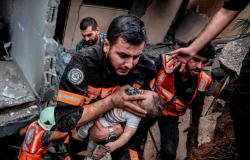Time passes for everyone, including Medicine. The last few decades have witnessed dizzying advances in terms of new technologies that mark the future every day. diagnosis and treatment of thousands of patients National Health System (SNS). Faced with a changing paradigm, the way the medical profession is taught must adapt to new circumstances and train health professionals in a different way than that used years ago. The real question is whether the Faculties of Health Sciences have evolved enough or if, on the contrary, they remain ‘stuck’ in the past.
Javier Crespo He is a full professor of Medicine at the University of cantabria and his answer to this same question is very clear. “In my opinion, the Medicine Degree, in most Spanish universities, has evolved insufficiently in recent years,” he maintains. Among the points to improve, he points out “a notable dissociation between the preclinical courses – first and third -, taught largely by teaching staff very far from clinical reality, and the clinical courses.”
Shortcomings of the Medicine Degree
He has also observed that, like other health qualifications, medical training “has not adapted or focused on basic aspects of this moment”, such as “learning centered on the patient and their problems”, the approach to precision medicine or the “incorporation of more advanced technologies in the delivery of teaching”. Lastly, this hematologist points out that the training plan “has not been modified consistently” with respect to areas of knowledge that have acquired more importance in recent years.
On the other side of the coin, Crespo identifies some points in which this degree has improved over the years, such as the collaboration with scientific societies. As an example, he points out a program that he knows closely as former president of the Spanish Society of Digestive Pathology (SEPD), in which both students and teachers can access “updated, comprehensive and homogeneous content that facilitates, respectively, the learning and teaching of Digestive System Medicine.”
An issue in which hardly any changes are identified is the weight of the theoretical and practical contents throughout the Degree. “Despite the adaptation of the Medical Faculties to the Bologna ‘spirit’, we continue to teach conventional master classes to excessively large groups and with an ivery little individualization of teaching“, he details. The weight of the practices is in his opinion “little”, because “there continues to be an excessive separation between the faculty and the hospitals.”
| “There is still an excessive separation between the faculty and the hospitals” |
Another important factor for Crespo is the emergence of Artificial Intelligence (AI) on the scene. sanitary“Our students should be educated in the enormous possibilities of these tools, but also in their potential risks,” he explains. The lack of prominence of this technology in the Medicine degree is due, in his opinion, to the absence of a reflection by the faculties themselves on “how AI should be implemented in teaching and what transparency, sustainability, interdisciplinary collaboration and evaluation must be applied,” he says.
Medical student profile
Taking all these advances into account, one might think that teaching classes is more complex than before. However, this doctor clarifies that does not identify added difficulties in teaching, since “student motivation is similar and, to a large extent, cultivating it is the responsibility of the teachers themselves.” In this sense, he remembers that those who access this degree are “the brightest students in our educational system, just like it happened years ago.
However, its profile has evolved in specific aspects as has society as a whole. “Academically your English level is much better, their communication capacity is greater and their handling and knowledge of digital tools is more advanced,” he points out. He also observes “a notable ability to carry out collaborative work,” as well as a cmost solid conception of medicine “as an engine of change and social equity.” Observing his current students, Crespo has also noticed that “their capacity for frustration in the face of failure is clearly less than that of previous generations.”
| “The capacity for frustration in the face of failure among medical students is less than that of previous generations” |
But what in his opinion is “the most relevant change” is related to the perception that the new promotions of doctors have about the balance between personal and professional In day to day. “The valuing of personal life over professional life is a sign of the new generations, which will mean a change, perhaps positive, in our profession. We old ‘rockers’ have dedicated ourselves body and soul to our profession, abandoning, many times unjustifiably, to our families,” he points out.
Necessary changes in Medicine
With all of these factors on the table, this doctor has identified a total of four areas of improvement that ‘urge’ in the “radical transformation that the Medicine Degree needs.” The first of them refers to thepatient-centered learning and its problems from the beginning: This professor considers it necessary to “incorporate clinical teachers in core subjects of the degree” and focus the teaching of the basic sciences in its clinical relevance, encouraging collaboration between different scientific branches to “promote the translational research in university education”.
The second of the points to be made up for Crespo is related to the Precision medicine. Considers that students should know individualization based on detailed information about each patient, and that the Degree should emphasize preventive work. For this, he maintains that it would be of great help integrate the different OMICAs (genomics, proteomics, etc.) on information platforms dominated by AI. The latter also occupies the third point, since it can be useful in teaching itself to “personalize learning, create updated content, simulate realistic clinical scenarios, support students individually and facilitate continuous evaluation.” However, their risks should always be known.
Finally, this hematologist calls for a more patient-centered approach. See it necessary that the Medical Schools They are responsible for “training doctors who treat the sick and not just diseases, adapting care to the reality of each patient”, as well as “promoting the active collaboration of patients in their treatment and recovery.”
Although it may contain statements, data or notes from health institutions or professionals, the information contained in Medical Writing is edited and prepared by journalists. We recommend the reader that any health-related questions be consulted with a healthcare professional.






